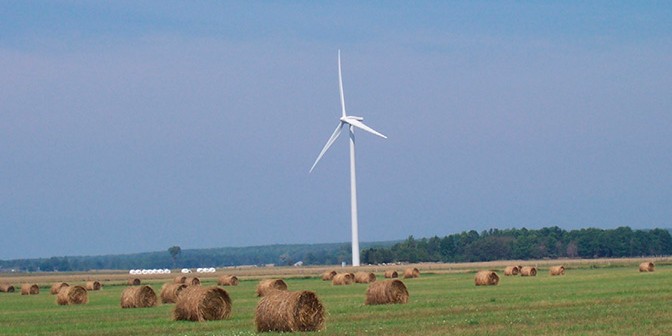There is a new and unique investment vehicle available today: wind and solar land leasing. More opportunities for land leasing are popping up as new wind and solar farms are under development to address the increasing demand for renewable energy. The benefits of wind and solar land leasing include long-term steady income for investors, reducing air pollution, and consolidating project land use. However, renewable energy leasing is not a get rich quick scheme- there is nothing here for a high risk/return investor. It’s like renting a home to a tenant who pays on time, leases for 30 years, and improves air quality simultaneously.
If you’re looking for a solid income investment opportunity that is good for the earth, read on!
Leasing is the most common form of land control in the U.S. and most wind and solar developers lease the land they develop. I have extensive experience leasing land inside large projects. If a large developer had a new three to five square mile project, they would first approach the owners with a lease offer. Since some project areas are made of small parcels, it is not uncommon for developers to lease land from 100 owners or more.
Within large projects, I have found that about 20 percent of owners won’t sign lease agreements. Some of the reasons are: 1) they don’t agree on the lease payment amount, 2) they have other plans for the land, and 3) they are not interested in renewable energy or long term payments. When the developer has exhausted efforts to lease all the parcels it is often possible to step in and make a cash offer for each property.
This is where my company, CleanUSA Power, comes in.
When working closely with developers, we have been able to purchase about half of the properties that developers haven’t been able to lease on their own. A cash buyout is the answer many owners are looking for. The lease rates paid by developers for wind and solar land vary widely.
A typical example is a 40 acre parcel we purchased for a solar farm project . This property filled a hole in a large solar farm and it pays accredited investors greater than 12 percent annually for 30 years. The 40 acre parcel generates approximately 4 MW of electricity, which powers over 2,000 homes. Besides the income generated, it is gratifying to be the catalyst to power over 2,000 homes. We didn’t build or maintain the project, but being a willing landowner in this case made the difference for the project to add 40 acres.
Without a lease-friendly owner, there would be a gap in the solar farm. Gaps or holes in solar farms reduce the output of the project. Developers are required to leave access to the “hole” which causes more ground to be lost if they have to leave an access road and a setback around the parcel. Also, it is a missed opportunity for a potential 30+ annual income stream for an investor. Finding and filling in project holes is satisfying.
Wind farm and solar farm investing are somewhat different. In wind farming, the landowner receives a percentage of the income that the entire wind field generates. As the landowner, your income depends on how many turbines are built on your land. If you have at least one turbine on your property, your income is a function of how many turbines are on your land and what the project’s overall performance is.
The average spacing for very large modern wind turbines is one turbine for 30 acres. This is a lot of ground. This spacing accounts for roads, power lines, valleys, washes and other obstacles. So, a 40 acre parcel may not get any turbines or it could get up to three. Your wind turbine count depends on how much land you have and the layout of the project.
Summing up the differences between solar leases and wind leases, solar leases are generally a stated amount, and wind leases generally pay a little better, but vary depending on how many turbines you have and how much wind was collected each year. Both types of leases are generally written for 30 years or longer.
The investment potential for purchasing wind and solar farm land is immense! There are 29 states (including Oregon) with renewable energy mandates and another six with goals. This trend for states to mandate renewable energy is likely to continue. More states will adopt renewable energy mandates, and states with existing mandates will legislate increasingly tougher mandates as time goes on.
For example, in California, where many of our projects are located, the mandate is for utilities to be 33 percent renewable by 2020. California Governor Jerry Brown is now calling for 50 percent renewable energy by 2030. These mandate milestones each require approximately another 100 square miles of development.
If even a portion of that land could be purchased and leased back to developers, it would be a huge win for all involved. The developers would have more contiguous project areas and build more efficient projects, leased acres earning royalties in the mid teens for 30-35 years would be a fantastic investment for a lot of people, and thousands of acres would power hundreds of thousands of homes! This example is just one state, and just one window of time through 2020. What about the rest of the nation?
Imagine being on the ground floor of renewable energy production all across the country. It supports clean air, American jobs and a sense of well-being. At its core it is backed by land (a limited resource), the demand for electricity in the future, and a desire to live in harmony with the earth.
John Copyak
Renewable Energy Real Estate Manager
john@cleanusapower.com
541-668-0423
The article has been prepared solely for informational purposes, and is not an offer to buy or sell or a solicitation of an offer to buy or sell any security, service or investment. The opinions expressed in this article do not constitute investment advice and independent advice should be sought where appropriate.



